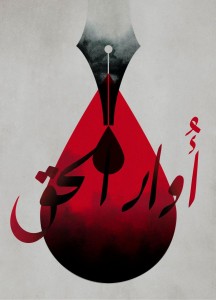Facing the dark side of social media
What could social media — Facebook, Twitter, YouTube — have done to prevent the radicalisation of Syed Rizwan Farook and Tashfeen Malik, the married couple who massacred 14 people enjoying a holiday party in San Bernardino, California? And an even more urgent question: What did social media do to radicalise them?
Early in the investigation, which the FBI is treating as an “act of terrorism”, there are no clear answers. All that has emerged is that Malik, the 27-year-old religiously conservative Pakistani pharmacy student who married the Chicago-born Farook, went onto Facebook during or after the mass shooting and swore allegiance to Islamic State (ISIS) leader Abu Bakr al- Baghdadi.
Officials say that Farook, who had a well-paid job as a county health inspector, had in the past reached out to Somalia-based al- Shabab and al-Qaeda’s Syria-based affiliate Jabhat al-Nusra. But when, how or why he did so is unclear.
These are hardly the usual social media activities one might expect of a suburban couple with a new baby in America. However, they are also not particularly strong evidence that social media was the catalyst of Malik’s and Farooq’s metamorphosis into mass murderers.
Even so, it is undeniable that social networks are being creatively misused by extremists for command-and-control purposes and propaganda. Facebook, Twitter, YouTube and other social media platforms have repeatedly, if unwittingly, served as distribution channels for radical groups and the library of grotesque online offerings continues to grow.
In September 2013, al-Shabab live-tweeted the four-day bloodshed at Nairobi’s Westgate mall. More recently, ISIS posted a chilling video online of six boys no older than 10 playing a deadly game of hide and seek among the ruins of the historic al-Rahba castle in Deir ez-Zor in Syria.
The children had to find and execute a prisoner. Each of the boys shoots the poor wretches on camera. The film remained freely available to view at the time of this writing. It is seen to transmit a terrifying message of youthful brutalisation and, more crucially, of ISIS’s iron core.
Such material obviously serves as a handy recruitment tool. As a US Homeland Security study said, ISIS uses social media in a way that “burnish(es) an image of strength and power” through its visibility on popular platforms and with all the attendant sharing, retweeting and online discussion.
Meanwhile, FBI Director James Comey told Congress that ISIS is reaching out, through Twitter, to about 21,000 English-language followers. Its message, he said, basically is as follows: “‘Come to the so-called caliphate and live the life of some sort of glory or something; and if you can’t come, kill somebody where you are; kill somebody in uniform; kill anybody; if you can cut their head off, great; videotape it; do it, do it, do it’ … (it’s) a devil on their shoulder all day long, saying ‘kill, kill, kill, kill’.”
But what resonance would that devil on the shoulder and the drumbeat to kill have for college-educated people such as Farook and Malik, who should have had every reason to live?
Farook’s family was known to have been dysfunctional — his father was an abusive alcoholic — and his wife’s father is said to have become increasingly religious in Saudi Arabia. On their own, these facts do not predispose individuals to commit mass murder but as citizens of the internet age, the couple would have had access to the echo chamber that is social media, with its multiple skewed pathologies of hate and violence.
As Sara Khan, director at the British anti-extremist group Inspire, has pointed out, terrorist groups’ aggressive online campaigns often play on a sense of personal grievance and “exploit religion” to suggest radicalism as a way to fill a void. It was well said that propaganda does not deceive people; it merely helps them to deceive themselves.
What, if anything, can be done? Social media platforms are increasingly trying to self-regulate with Twitter taking down al-Shabab’s accounts after the Westgate mall atrocity and Facebook, YouTube and Google routinely removing content that glorifies violence and hatred.
The United States and some European governments have considered steps to force social media platforms to take responsibility for terrorism-related content, as has a UN panel that advises the UN Security Council on sanctions against extremist groups.
But unceasing corporate vigilance cannot prevent people like Farook and Malik from being what Comey describes as “inspired by foreign terrorist organisations”.
Only families — and friends — can know if and when their loved ones are going over to the dark side. They are the first and last defence and possibly the only social safety net that can withstand the forces of social media.


